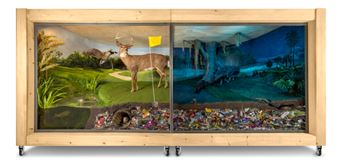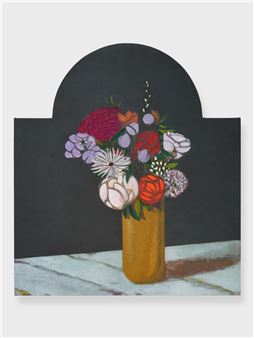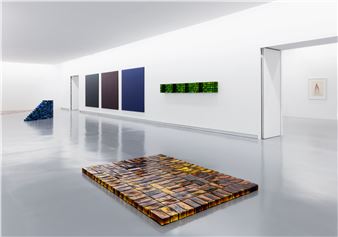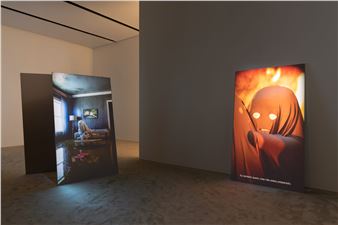1988, Artworks from the Collection Lambert
The works presented in this second exhibition of the Playgroundprogram, dedicated to artwork held in the Collection Lambert, have one thing in common: they were created in 1988. Though the choice of this particular date might be arbitrary, it raises a series of issues. Some of which are connected to the creation of an art collection – in a particular that of a dealer-collector, others to existing and emerging scenes in a determined temporal space, or others to the memory of the period and the events that the artworks carry with them, to the links they have with the society in which they are conceived and developed, at our sides.
The two Date Paintingsby On Kawara are in themselves evidence of the physical and emotional existence of an artist at the moment of their creation. They are two slices of time, to which personal or collective elements of our shared lives attach themselves. They are the expression of a memory that could only be punctuated by certain dates saved from oblivion, revived on a museum wall in a manner that is as abrupt as it is poetic.
1988 is without doubt one of the dates that crops up most frequently in the professional life of Yvon Lambert, as it was the year of the unforgettable exhibition of Jean-Michel Basquiat in his Parisian gallery – the first in France for which the artist produced specific new work – and the year that this same artist, who Rene Ricard named The Radiant Child, died aged 27. The year symbolises a pivotal time in which painting made a comeback from the world of the dead, where, in Europe as in the US, it had been too rapidly relegated by some, as Robert Combas and Loïc Le Groumellec bear witness.

Recommended for you
The works presented in this second exhibition of the Playgroundprogram, dedicated to artwork held in the Collection Lambert, have one thing in common: they were created in 1988. Though the choice of this particular date might be arbitrary, it raises a series of issues. Some of which are connected to the creation of an art collection – in a particular that of a dealer-collector, others to existing and emerging scenes in a determined temporal space, or others to the memory of the period and the events that the artworks carry with them, to the links they have with the society in which they are conceived and developed, at our sides.
The two Date Paintingsby On Kawara are in themselves evidence of the physical and emotional existence of an artist at the moment of their creation. They are two slices of time, to which personal or collective elements of our shared lives attach themselves. They are the expression of a memory that could only be punctuated by certain dates saved from oblivion, revived on a museum wall in a manner that is as abrupt as it is poetic.
1988 is without doubt one of the dates that crops up most frequently in the professional life of Yvon Lambert, as it was the year of the unforgettable exhibition of Jean-Michel Basquiat in his Parisian gallery – the first in France for which the artist produced specific new work – and the year that this same artist, who Rene Ricard named The Radiant Child, died aged 27. The year symbolises a pivotal time in which painting made a comeback from the world of the dead, where, in Europe as in the US, it had been too rapidly relegated by some, as Robert Combas and Loïc Le Groumellec bear witness.

 ARTISTS
ARTISTS
















